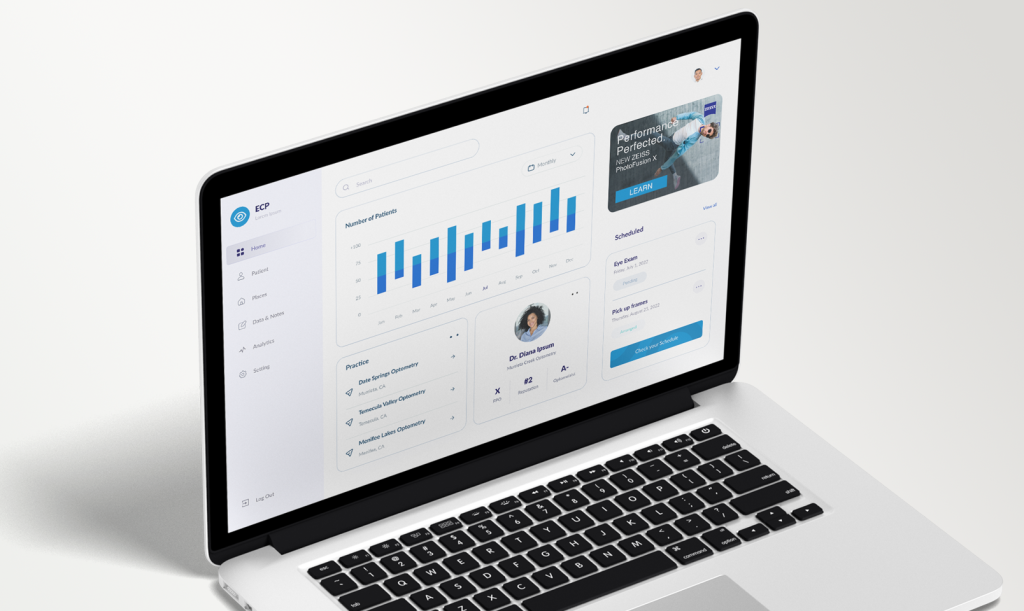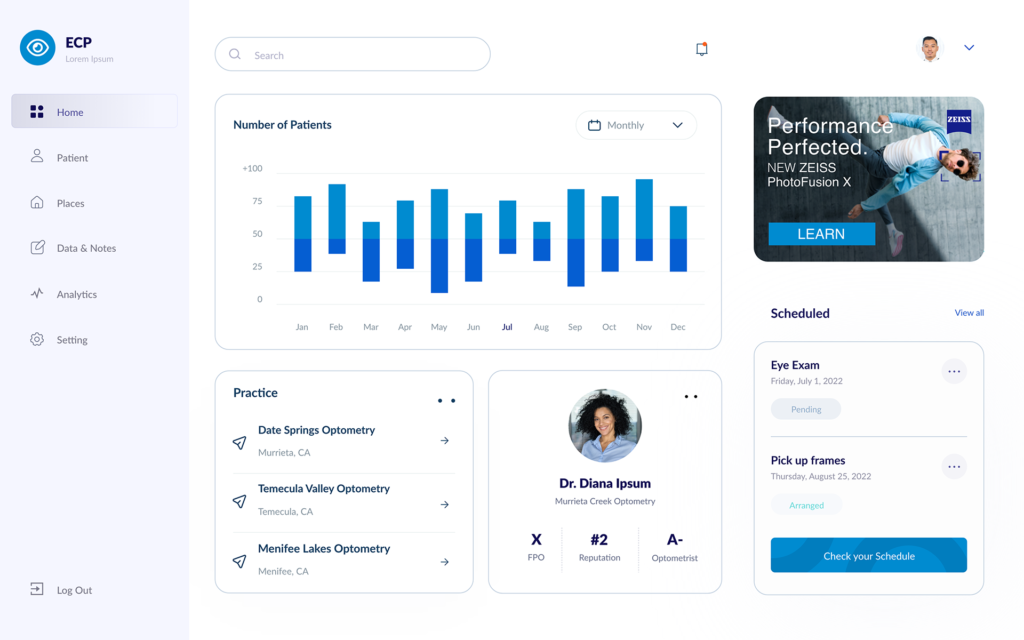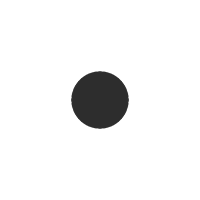
In the rapidly evolving world of eye care and ophthalmology technology, simplicity and user-friendliness are paramount. The EHR (Electronic Health Record) dashboard concept I’ve designed is tailor-made to streamline the user experience and enhance efficiency in eye care, optometry, and ophthalmology practices. With a clean and intuitive interface, it offers a refreshing departure from the cluttered and often overwhelming EHR software currently available in the market.

Key Features of the Eye Care EHR Dashboard Design:
- Uncluttered Layout: Our EHR dashboard emphasizes a minimalist design tailored to eye care professionals. By decluttering the interface, it provides users with a sense of focus and eliminates the overwhelming feeling often associated with healthcare software.
- Customizable Widgets: Users in eye care and ophthalmology can personalize their dashboard to suit their specific needs. They have the freedom to add, remove, or rearrange widgets, making their most frequently used features readily accessible.
- Intelligent Task Management: The system uses intelligent algorithms to prioritize tasks crucial for eye care professionals. This ensures that users can quickly attend to the most pressing patient needs and appointments.
- Visual Analytics: Visual representations of ophthalmic data are vital for quick comprehension. Our dashboard provides easy-to-understand charts and graphs that display patient eye health data, treatment outcomes, and practice performance metrics.
- User-Friendly Navigation: The navigation is designed to be as straightforward as possible, focusing on ophthalmic data. With intuitive icons, organized menus, and a natural flow, eye care professionals can access various sections without feeling lost.
- Ergonomic Workflow: The design prioritizes ergonomic data entry and retrieval, reducing the strain on optometrists and ophthalmologists. Easy access to ophthalmic images and test results makes a difference in accurate diagnostics.
- Responsive Design: The EHR dashboard is responsive, making it accessible on various devices, including tablets and smartphones, to support eye care professionals in various settings, from eye clinics to remote consultations.
- Patient-Centric Approach: The dashboard design maintains a strong focus on the patient’s vision health. It provides immediate access to detailed eye exam histories, allowing eye care professionals to make informed decisions efficiently.
- Quick Search and Filters: Robust search functionalities enable easy and quick access to patient eye health records. Filters and search bars help narrow down results, saving time and effort when dealing with ophthalmic data.
- Data Security: Data privacy and security are of paramount importance in eye care. The design ensures compliance with HIPAA regulations, implementing multi-factor authentication and encrypted connections to safeguard sensitive patient information.
- Banner Ad Integration: The dashboard allows for the seamless integration of banner ads, enabling eye care professionals to showcase updates on new optical products, eyewear collections, or services, ensuring they stay informed about the latest developments in the eye care field.
This concept places user experience at the forefront, especially for eye care and ophthalmology professionals. It simplifies EHR interactions, reduces cognitive load, and promotes better eye health care outcomes by helping professionals focus on their patients’ vision and eye health rather than navigating complex software.
In the dynamic landscape of eye care and ophthalmology, an EHR dashboard design like this holds the potential to improve user satisfaction, enhance productivity, and ultimately contribute to the delivery of high-quality eye care.
